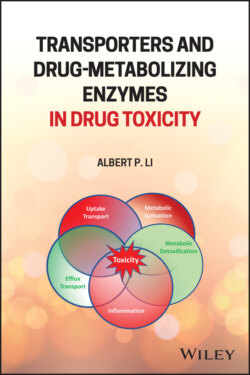Читать книгу Transporters and Drug-Metabolizing Enzymes in Drug Toxicity - Albert P. Li - Страница 50
3.2 Acetaminophen
ОглавлениеAcetaminophen (APAP) (paracetamol) is an over‐the‐counter (OTC) analgesic drug (NSAID) used extensively by the US population for the treatment of pain and fever. It is often used in combination with other OTC products for the relief of pain and cold symptoms [1–7]. It is also one of the oldest drugs (>50 years) that remains on the US market in spite of its association with up to 50% of drug‐induced liver failures in the US, leading to deaths or a need for liver transplantation [8–10]. APAP hepatotoxicity is often due to intentional or unintentional overdosage, with liver toxicity reported to be observed in patients administered chronic doses of >5 g per day or acute doses of >7 g [11]. However, there are also cases of APAP‐induced liver failure in patients who used the recommended therapeutic doses [10], with alcohol intake as a major exacerbating factor [12–20]. Hepatotoxicity can be attenuated upon intravenous treatment with N‐acetyl cysteine (NAC) within eight hours of APAP ingestion. The effectiveness of NAC treatment is a function of plasma APAP level as well as the time interval between NAC administration and APAP ingestion [21, 22].
